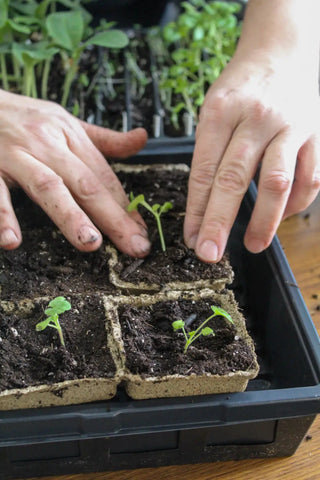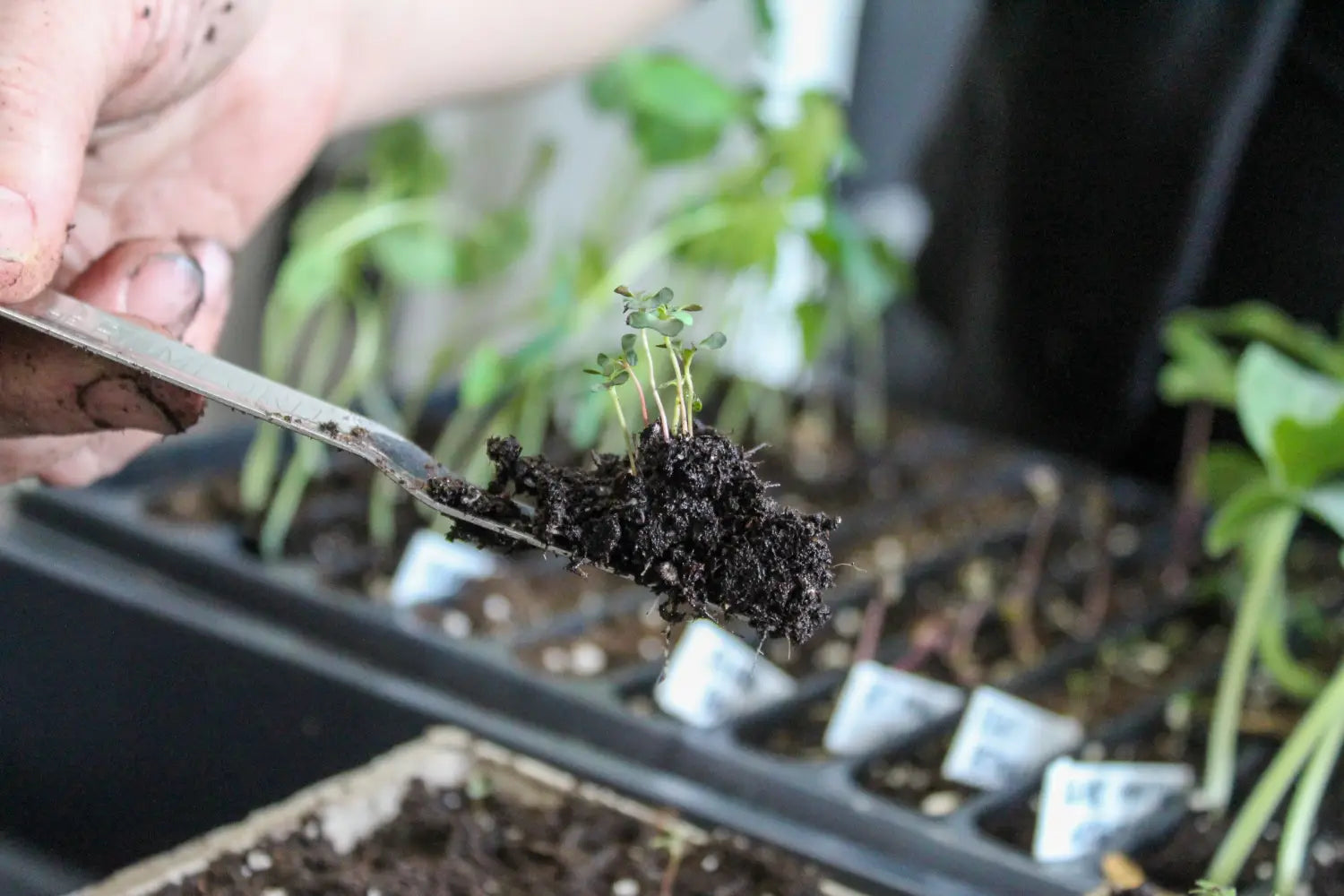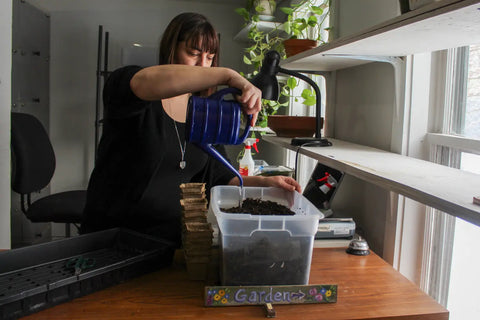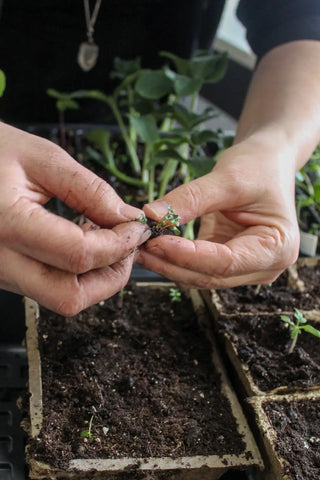So, the hard part is over, right? Getting seeds to germinate and keeping them alive long enough to admire them is a rush… but now what to do? They’re going to keep getting bigger, and we know that the small pots they’re in aren’t going to do the trick forever.
If you live in the northeast like us, it’s a very real possibility to see snow in the middle/end of April, so we won’t be doing any planting outside until mid-May. The best way to help your growing seedlings is to transplant them into bigger pots, as well as begin to feed them small amounts of fertilizer.
A quick way to determine if your seedlings are ready for transplant and feeding is to count the number of leaves. Seedlings sprout one set of leaves after bursting up through the soil, but they’ll also sprout a second set of leaves shortly after. These are their first sets of ‘true leaves’.
By the time you have 2-3 sets of true leaves, your seedlings are strong enough for a move to a bigger pot, and ready for a bit of added nutrients now that they’ve taken all they can from the seed starting mix.
We asked Jaci, the Head of Research and Development, for her best advice on transplanting seedlings:
What Seedlings to Transplant & When to Transplant

Jaci: For the most part, you’re starting things indoors to give them a head start before they go outside. Sometimes things need to be started so far in advance that they outgrow the pot you started them in… hence transplanting.
If you’re starting your seeds in seedling flats, you’ll want to transplant your seedlings into 3″-4″ peat, cow pots or an up-cycled container.
The longer amount of time that the seedling will be in it’s ‘final pot’ (the last container before being transplanted into the ground), the bigger pot you’ll need. The general rule of thumb is that you disturb the roots of your seedlings as little as possible.
What Type of Soil Should You Use for Transplanting Seedlings?
J: I suggest transplanting into a potting mix that contains more nutrients. You can also mix in worm castings as a supplement; this is something I do with my own transplants.
What Seeds Do I Not Transplant?
J: Some plants have such delicate root systems that they can’t really be transplanted into another container, like radishes, parsnips, or carrots. These things need to be sown directly into the soil.
What's the Best Fertilizer for Seedlings?
J: By the third set of ‘true leaves’, you’ll want to start feeding your seedlings with a greatly diluted fertilizer. I use a 1/4 dilution of suggested measurement to start off. You don’t want to burn the seedlings, so be careful how much you use. I suggest using fish emulsion or seaweed fertilizer. You should fertilize about once a week with the diluted mixture. Keep an eye on your seedlings to make sure they stay green and healthy. If they start to change color or look unhappy, they may be missing a key nutrient.

We re-homed some of our own seeds this week:
Little Bing Tomatoes, Baby Blue Eucalyptus and Multi-bloom Mix Geraniums.

We used our Vermont Compost Company Fort Light Compost-Based Potting Soil as a base and gave it a good healthy drink before filling up our peat pots.
Next, we gently loosened the soil around our strongest seedlings to prepare for a move. If your seedlings are particularly delicate or small, a widger will help a lot.

Jaci, very carefully separated the Geranium seedlings. This thinning process allows the plants more room to grow.
Working with a pre-moistened soil makes it easier to ensure the fragile roots have an easier transition.
Once your seedlings are in their new pots, give them another small drink of water to help their roots establish in their new homes. Give them plenty of light, regular watering, and keep an eye on their growth! It won't be long before they're ready for the full garden.
Got questions? Give us a call or send us an email. We're here to help and are committed to helping every home gardener suc-seed🌱


Once transplanted do they need to stay under lights until you harden them off? The problem I have is having enough lights to accommodate repotting everything.
I like to transplant tomatoes into deep 3 or 4 inch pots as they seem to thrive once they have the room.
Thanks for the updated information. Very informative.
I generally transplant much sooner than is recommended. I start my seeds in quite shallow seed planting flats that are only about a half an inch deep. As long as a person uses a gentle touch and lifts the seedling and some of the starting mix up so the stem does not have to be pinched between fingers, they transplant quite well at this stage. I also use a wooden barbecue skewer to first make a hole in the potting mix of the plants new home and then use that same skewer to lift up the seedling and gently set it into its new home. I gently add more potting mix to stabilize the seedling and very gently water it in so that the potting mix firms up around the seedling. Even petunias transplant well if done like this using a very gentle touch.
I prefer to order seeds and such from the catalog, however I am always interested in the wealth of information that you provide. I especially enjoy the recipes. I will continue to purchase our seeds through Pinetree because they are very high quality and provide us with spectacular vegetables.
Will they grow OK if the cow pots stay dry , esp on their sides, or should they be damp? If dry, will the cow pots suck out the moisture from the potting soil?